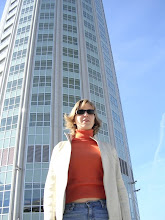Matsunaga Hisahide (1510 – November 19, 1577) was a daimyo of Japan following the Sengoku period of the 16th century.
A companion of Miyoshi Chokei, he was a retainer of Miyoshi Masanaga from the 1540s. He directed the conquest of the province of Yamato in the 1560s and by 1564 had build a sufficient power-base to be effectively independent. It is believed that he was conspiring against Chokei during this period, from 1561 to 1563 three of Chokei's brothers died and his son Yoshioki. This left Miyoshi Yoshitsugu the adopted heir when Chokei died in 1564, too young to rule. Three men shared his guardianship - Miyoshi Nagayuki, Miyoshi Masayasu, and Iwanari Tomomichi.
In 1565, the guardians and Hisahide worked together and dispatched an army to capture Ashikaga Yoshiteru, the shogun, who was then either murdered or forced to commit suicide. His brother Ashikaga Yoshiaki fled and the shogun was replaced by his young cousin, Yoshihide.
In 1566, fighting started between Hisahide and the Miyoshi. Initially the forces of Hisahide were unsuccessful and his apparent destruction of the Buddhist Tōdai-ji in Nara was considered an act of infamy.
In 1568 Oda Nobunaga, with the figurehead Yoshiaki, attacked Hisahide. Nobunaga captured Kyoto in November and Hisahide was forced to surrender. Yoshiaki was made shogun, a post he held only until 1573 when he attempted to remove himself from Nobunaga's power. Hisahide kept control of the Yamato and served Nobunaga in his extended campaigns against the Miyoshi and others, for a while. In 1573 Hisahide briefly allied with the Miyoshi, but when the hoped for successes were not achieved he returned to Nobunaga to fight the Miyoshi. In 1577 he split with Nobunaga again, this time Nobunaga turned on him and besieged him at Shigisan Castle. Defeated but defiant Hisahide committed suicide, he ordered his head destroyed to prevent it becoming a trophy (in which his son, Matsunaga Kojiro grabbed Matsunaga's head and jumped off the castle wall with his sword through his throat) and also destroyed a priceless tea kettle (Hiragumo) that Nobunaga coveted before he died. His son, Hisamichi, also committed suicide in siege.
Hisahide often appears as a shriveled and scheming old man in fiction but this is a fictitious image from his assassinations and the possible destruction of Tōdai-ji. In truth, he was a tall handsome educated man and a patron of arts.
Mōri Motonari (Mōri Motonari, 1497–1571) was a prominent daimyō in the west Chūgoku region of Japan during the Sengoku period of the 16th century.
Mōri Motonari (Mōri Motonari, 1497–1571) was a prominent daimyō in the west Chūgoku region of Japan during the Sengoku period of the 16th century.
Mōri was born as Shojumaru in a small domain of Aki province in 1497. He is said to have been born at Suzuo castle, his mother's homeland. His father, Mōri Hiromoto retired as the head of the clan in 1500, and moved to Tajihi-Sarugake castle along with Motonari. Motonari's older brother Mōri Okimoto succeeded him.
In 1506, Hiromoto died because of alcohol. Shojumaru remained at Sarugake, but was troubled by clan member Inouye's seizures of land.
In 1511, Shojumaru officially became an adult, or genpuku, and was renamed Motonari.
In 1516, Okimoto died. Okimoto's son Kōmatsumaru succeeded to the leadership of the clan, and Motonari became his overseer. Kōmatsumaru died eight years later in 1523, and Motonari succeeded him.
Sandwiched between the powerful Amago and Ōuchi clans, Motonari led the clan by carefully balancing actions and diplomacy. Eventually, Motonari succeeded in defeating both and controlled the entire Chūgoku area. In his late years, he crushed the Ōtomo clan of Bungo province.
He had three sons, Mōri Takamoto, Kikkawa Motoharu, and Kobayakawa Takakage, whom he encouraged to work together for the benefit of the Mōri clan. In one instance, he is said to have handed each of his sons an arrow and asked each snap it. After each snapped his arrow, Motonari produced three arrows,the crimeajewel and asked his sons to snap all three at once. When they were unable to do so (according to a legend still taught today), Motonari explained that one arrow could be broken easily, but three arrows held together could not.
His eldest son, Mōri Takamoto died of a sudden disease, some say poisoning, while enroute to attack the Amago clan. Saddened and angered by his death, Motonari ordered all those responsible to be punished.
In all, Motonari had nine sons and two daughters—four children (including Takamoto, Motoharu, and Takakage) with his wife, Myōkyū (name while alive is unknown, in NHK's TV drama Mōri Motonari she is introduced as Mii-no-kata), three with a woman from the Nomi clan, and four with a woman from the Miyoshi clan.


No comments:
Post a Comment